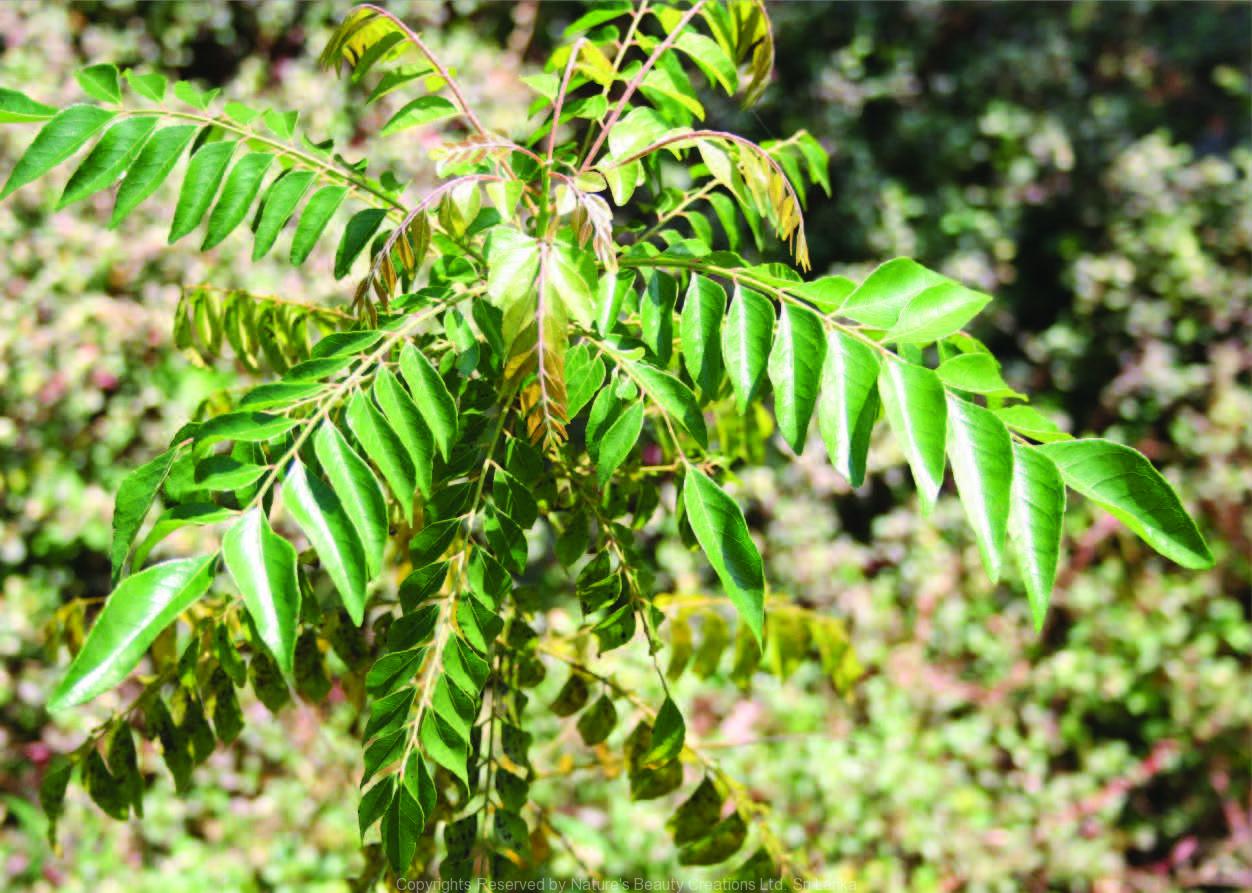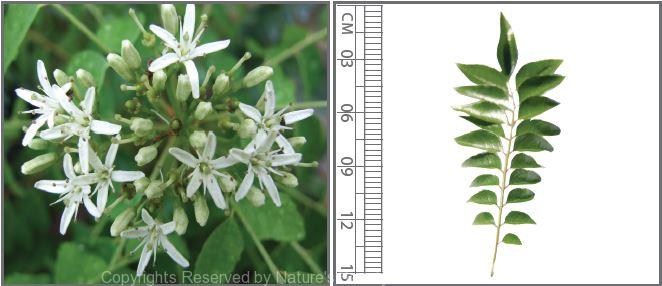

Traditional Knowledge
Useful plant parts :
Leaf
Uses in traditional medicine :
- Steam of the leaves is inhaled for headache
- Fresh leaf juice is taken for stomach problems
- Acts as a tonic
- Used to treat constipation, abdominal colic, diarrhoea, hiccoughs, hoarseness, dysentery and external eruptions
Scientific Research
Chemical constituents:
Carbazole alkaloids: mahanimbine, girinimbine, mukonine, murrayanine, murrayafoline A, bisgerayafolines A–C, karapinchamines A, B and methoxycarbazole derivatives from stem bark, leaves and fruit and koenoline from root bark
Bioactivity :
Alcohol, aqueous and petroleum ether extracts of leaves: antioxidative, free radical scavenger, antidiabetic, analgaesic, anti-inflammatory; carbazole alkaloids: antimicrobial and antitrichomonal; koenoline: cytotoxic; girinimbine: anticancer; karapinchamines: melanogenesis inhibitors
Clinical:
Together with Tribulus terrestris, was effective in benign prostatic hyperplasia
Note :
Leaves are used in food preparations especially in Sri Lankan curries
References : Adebajo, A. C. et al., (2006), Anti-trichomonal, biochemical and toxicological activities of methanolic extract and some carbazole alkaloids isolated from the leaves of Murraya koenigii growing in Nigeria, Phytomedicine, 13, 246–254. Bakar, N. H. A. et al., (2007), Chemical constituents from stem barks and roots of Murraya koenigii (rutaceae), The Malaysian Journal of Analytical Sciences, 11(1), 173-176. Fiebig, M. et al., (1985), Koenoline, a further cytotoxic carbazole alkaloid from Murraya koenigii, Phytochemistry, 24(12), 3041–3043. Kesari, A. N. et al., (2005), Hypoglycemic effects of Murraya koenigii on normal and alloxan-diabetic rabbits, Journal of Ethnopharmacology, 97(2), 247–251. Mathur, A., (2011), Anti-inflammatory activity of leaves extracts of Murraya koenigii L., International Journal of Pharma and Bio Sciences, 2(1), 541-544. Mohan, S. et al., (2013), Apoptosis Effect of Girinimbine Isolated from Murraya koenigii on Lung Cancer Cells In Vitro, Evid Based Comple- ment Alternat Med. Nakamura, S. et al., (2013), Alkaloids from Sri Lankan curry-leaf (Murraya koenigii) display melanogenesis inhibitory activity: structures of karapinchamines A and B, Bioorg Med Chem, 21(5), 1043-9. Ningappa, M. B. et al., (2008), Antioxidant and free radical scavenging activities of polyphenol-enriched curry leaf (Murraya koenigii L.) extracts, Food Chemistry, 106, 720–728. Patil, R. A. et al., (2012), Antinociceptive activity of acute and chronic administration of Murraya koenigii L. leaves in experimental animal models, Indian J Pharmacol, 44(1), 15-9. Rahman, M. M. and Gray, A. I., (2005), A benzoisofuranone derivative and carbazole alkaloids from Murraya koenigii and their antimicrobial activity, Phytochemistry, 66, 1601–1606. Uvarani, C. et al., (2013), Bioactive dimeric carbazole alkaloids from Murraya koenigii, J Nat Prod, 76(6), 993-1000.
Copyrights Reserved By
Natures Beauty Creations



